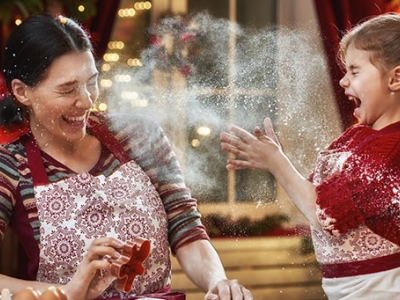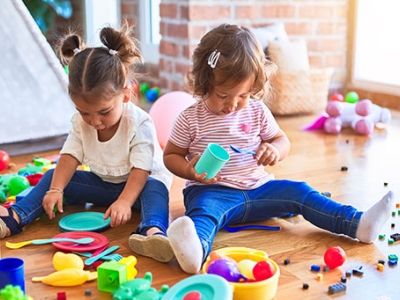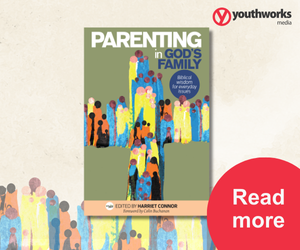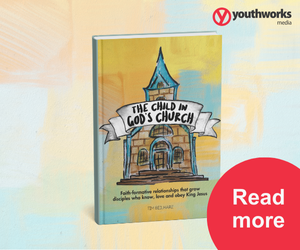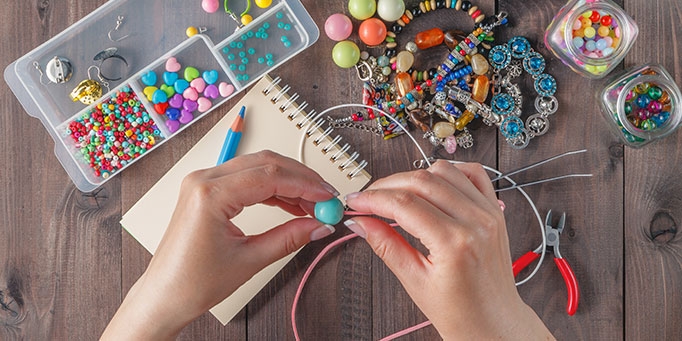
Converted to craft: why handmade gifts are great
Some inspiration to get crafty!
I used to think that ‘homemade’ meant ‘daggy’, uncool or substandard. As a child, the jumper that your grandma knitted you was never as cool as the ones you could buy from the shops. The wobbles and imperfections of handmade jewellery, clothes or homewares could never compete with the precision of something made in a factory by a machine.
But in recent years I have undergone a bit of a ‘conversion’ in my thinking. In fact, for my 40th birthday last year, when someone asked what I wanted for a present, I requested anything they had made or grown with their own hands. (Among other things, I was duly blessed by a handmade vase, a hand-knitted jumper and a potted plant cutting.)
Here's why I’ve been ‘converted’ to craft.
It’s our purpose
In our era of mass production, it’s easy to forget that making things with our hands is actually what human beings were made for in the beginning. God created us to ‘work’ the earth for the things we need—food, clothing, shelter and so on. For centuries, people have been studying the earth and its natural resources and honing skills and tools to help them make objects of purpose and beauty.
‘Craft’ is not child’s play. When you see someone moulding clay on a wheel, turning wood with a lathe or knitting furiously (while watching television!), it is awe-inspiring. A craftsperson’s hands have practised a skill so often that they just ‘know’ what to do.
I used to think that kids’ craft was just a way to keep them busy and leave parents with yet another useless (and usually very sticky) item to store somewhere. However, I’ve come to realise that doing craft is actually training kids in fine-motor skills like measuring, cutting, drawing and painting that can be put to good use later on. With all this practice, our kids might actually create something beautiful and useful one day!
It’s personal
Making something with your own hands creates a one-off item that literally has your fingerprints on it. Every item you make has a visible history—you can see the layers and grooves, the mistakes and reworkings. By contrast, factory-made things are impersonal in their perfection; each item is exactly the same.
When you gift something handmade to someone else, it is truly a gift from you to them, with all the time, effort, thought and love that you have put into it. Every time they see it, they will think of you.
It’s better for the planet
Mass production takes a huge toll on our environment, in the form of factory emissions, packaging, transport and waste. But making or growing something yourself leaves a much smaller imprint on the earth.
---
Recently, I spoke to ‘crafty mum’ Edwina Scott about how she’s developed her skills.
Learning to be crafty
Have you always done craft? When did you start?
Craft has been a more recent staple in my life. Before having kids, I was a high school teacher and didn’t have the mental space for anything beyond the things that were already in my life.
What kinds of things do you make? How do you learn new skills?
My crafting has evolved over time. A wonderful friend, whom I met at mothers’ group with our first babies, was very crafty and her talent and enthusiasm encouraged me on. I started out with a bit of appliqué and moved on to stencil cutting to make onesies and clothes for my kids and as gifts.
Another friend who I went to school with runs a workshop in the city where you can do all sorts of crafty lessons. A few years back, I went along to a polymer clay class there and really enjoyed it. Since then, I’ve mainly made polymer clay jewellery and more recently, I did another class learning about casting resin.
What is it about creating things that you enjoy?
I’m not sure I can exactly put my finger on it! I wouldn’t even really see myself as a crafty person but having an outlet that isn’t my kids/mum/wife type duties is nice. It’s nice to produce something tangible when a lot of what I do doesn’t have an easily visible outcome or will have to be done again tomorrow.
I have also enjoyed using craft as a means to connect with other women, and develop relationships and cultivate opportunities to share the gospel. I recently ran a wreath-making evening for my Bible study group and their friends. Everyone really enjoyed creating something, but it also gave us an opportunity to talk about the hope Jesus offers. Perhaps unsurprisingly, it's been a great joy to craft with this purpose.
When do you find the time?
With small kids, daytimes are out, mostly because they want to get involved. (We do sometimes sit down together to make but I prefer the quiet and freedom of doing it on my own or with another adult.) I tend to do it in the evenings. Being married to an Anglican minister means there are multiple nights each week when I’m home while my husband is out, which gives me plenty of opportunity to craft. Though it definitely ebbs and flows. Sometimes I will make a whole lot over a short period, but I also have times when I do very little because life is busy or motivation is low.
You often make gifts, rather than buying them. Which gift ideas have worked the best? How do people respond to a handmade gift?
It is very handy being able to make gifts for people. With four kids and many preschool and school teachers and Sunday school teachers and friends of my own, there is always a birthday or an occasion where a gift is required. It’s nice to be able to have a destination for my craft beyond a box or my own cupboard. Earrings and trinket dishes are fairly safe options as gifts, and you can make them personal too (working with someone’s favourite colours, for example). I have also made a fair few personalised water bottles in my time which seem to be an appreciated practical gift.
Do you have any tips for making craft with kids fun, rather than stressful?
I have to admit, I do sometimes avoid doing craft with my kids. Mostly because I find it stressful and struggle to let go of the reins and don’t really want to have to deal with clean up! Having kids with a range of ages can also make it a bit tricky to find something that works for everyone. But we routinely have holiday clay sessions and we pull out the paints if I’m feeling particularly carefree. Hama beads are also popular with my kids. My littlest isn’t quite there yet but she can play while the others have a proper go.
My only tips are to let go of expectations of what it might look like and just be prepared for the mess. I think pre-planning helps me to be in a better headspace for it too. If the kids ask to do craft and I’ve not mentally prepared myself, I find it much harder.
What made you decide to start selling your creations?
I have had a few friends on occasion encourage me to sell my jewellery and my husband has definitely been a keen proponent of me having a go at selling. Recently he helped me set up an Instagram and Facebook page for selling my crafts. It’s called Amateur Hour.
With Christmas and the summer holidays around the corner, why don’t you try your hand at some craft?
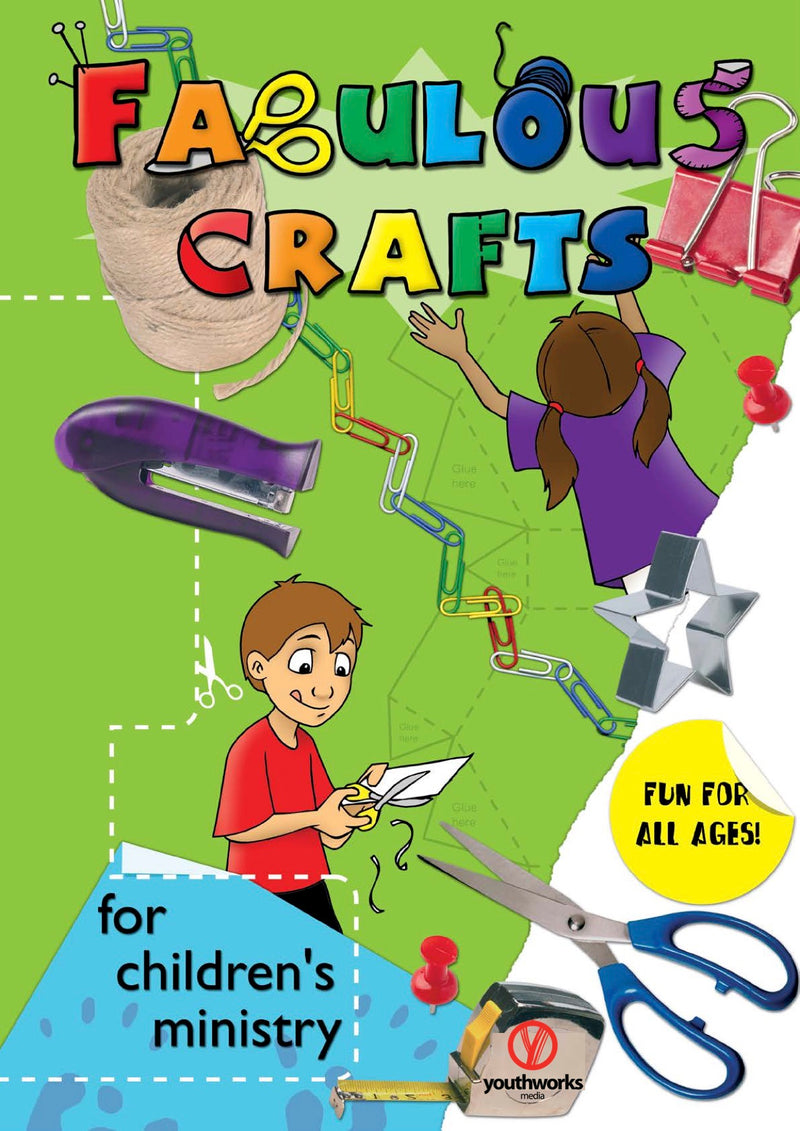
Fabulous Crafts
Dozens of reliable and easy-to-complete craft ideas suitable for both girls and boys from Infants to Primary. With minimal preparation time necessary, Fabulous Crafts will equip each teacher with a plethora of fun ideas that will engage the budding artists in your class in no time at all.
For more articles from Growing Faith, subscribe to our monthly e-newsletter.
To hear about the latest books and resources from Youthworks Media, subscribe here.


